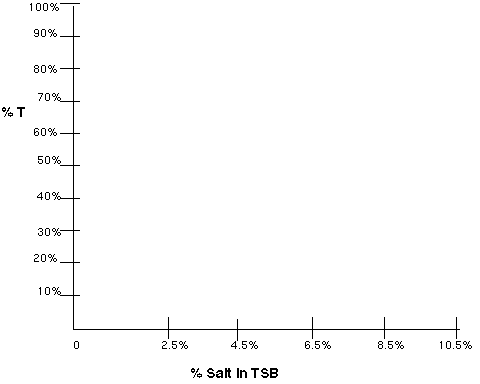Cells have membranes which are permeable to water diffusion but which do not allow the salts to pass. Thus, only water can diffuse. This diffusion of water across a semi-permeable membrane is called osmosis. The membrane allows the cell to choose, by means of receptors and channels, the things it will let in and it allows the cell to hold onto the many vital substances which are dissolved in its cytoplasm.
Yet, this situation makes the cell very sensitive to the free water concentration of its environment. If the surrounding solution's solute and water concentrations are not in equilibrium with the concentrations of the cells cytosol, then free water will begin to diffuse either into or out of the cell.
If a cell encounters a hypotonic environment, (like pure water for instance), water will diffuse into the cell and the cell will begin to swell. This can of course lead to an explosion of sorts. Many bacteria have cell walls which protect them from such osmotic rupture (or osmotic lysis) by providing a rigid limit to the swelling cell. This results in a counter pressure to the pressure of the diffusing water. The amount of counter pressure needed to stop the diffusion of water is called the osmotic pressure.
Similarly, if there is a higher concentration of dissolved salt outside of the cell (a hypertonic environment), then H20 will diffuse "out" from the cell and the cell will dehydrate and shrink and cellular metabolism will cease. This phenomenon is called plasmolysis and it is the reason why foods can be preserved with high concentrations of salt and sugar.
If solute concentrations are equal between the environment and the interior of the cell, there will be no net gain or loss of H20 from the cell. Such a situation is called isotonic.
Bacteria differ with regard to their osmotic needs. For instance, some extreme halophiles actually require salt concentrations approaching 30% whereas many other organisms would be totally inhibited or killed by such high salt concentrations.
(Additional readings: Tortora, et. al.: Please read about osmosis and diffusion. Also read about the salt requirement of various organisms. ).
SALINITY EXPERIMENT
In this experiment you will be testing the growth response of various bacterial species to changes in salinity (osmotic pressure). To accomplish this, you will be growing the bacteria in tryptic soy broths containing a range of salt concentrations. You will measure the amount of growth with a spectrophotometer and you will graph the results.
*Each group will grow the species of bacteria assigned to you.
MATERIALS:
